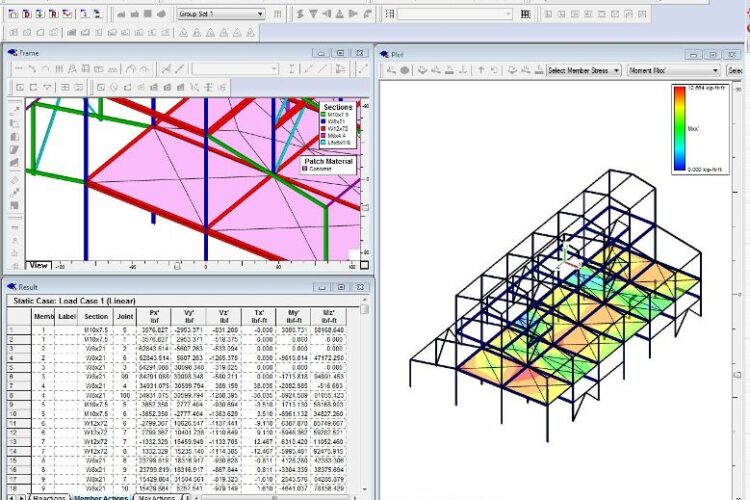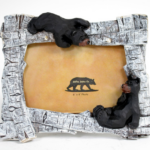
I. Introduction to Multiframe Photos
A. Definition of multiframe photos
B. Brief history and evolution
II. Benefits of Multiframe Photos
A. Enhanced storytelling
B. Improved image quality
C. Creative possibilities
III. Types of Multiframe Photos
A. Panoramic photos
B. HDR (High Dynamic Range) imaging
C. Focus stacking
D. Time-lapse photography
IV. How to Create Multiframe Photos
A. Equipment needed
B. Capturing and processing techniques
C. Software recommendations
V. Examples of Multiframe Photos
A. Showcase of stunning multiframe photos
B. Analysis of techniques used in examples
VI. Best Practices for Multiframe Photos
A. Planning and composition
B. Technique execution
C. Post-processing considerations
VII. Conclusion: Embracing the Future of Photography with Multiframe Techniques
A. The impact of multiframe photos on the photography industry
B. Encouragement for photographers to explore multiframe techniques
I. Introduction to Multiframe Photos
In the ever-evolving world of photography, it’s essential to stay informed about new techniques and trends that can elevate your craft. One such technique is the use of multiframe photos, a fascinating and versatile approach that combines multiple images to create a single, more dynamic and engaging photograph. Let’s dive into the captivating realm of multiframe photos and explore their definition, history, and evolution.
A. Definition of Multiframe Photos
At its core, multiframe photography involves capturing and combining multiple images to create a final photograph. These images, or frames, are taken sequentially, often from slightly different perspectives, positions, or exposure settings. By merging these frames, photographers can create stunning visuals that tell a more comprehensive story, offer enhanced image quality, and unlock new creative possibilities.
B. Brief History and Evolution
Multiframe photography has been around for decades, with the earliest examples dating back to the 1850s. The technique, however, gained significant traction in the late 20th century with the advent of digital photography and powerful editing software. Some notable milestones in the evolution of multiframe photos include:
- 1980s: The first digital panoramic cameras appeared, enabling photographers to capture and stitch together multiple frames to create wide-angle vistas.
- 1990s: The introduction of Adobe Photoshop and similar editing software allowed for more sophisticated image blending and manipulation, paving the way for techniques like HDR imaging and focus stacking.
- 2000s: The widespread adoption of digital SLR cameras and improved in-camera features facilitated the creation of high-quality multiframe photos, further popularizing the technique.
- 2010s: Time-lapse photography, a form of multiframe photography, became increasingly popular, thanks to the accessibility of high-quality cameras and user-friendly editing software.
Today, multiframe photos continue to evolve, driven by advancements in technology and the ever-growing creativity of photographers worldwide. As a result, it’s an exciting time to be a photographer, with endless opportunities to learn, experiment, and create captivating multiframe photos.
Now that we have a solid understanding of what multiframe photos are and their fascinating history, let’s explore the numerous benefits they offer in the next section.
II. Benefits of Multiframe Photos: Unleashing a New Dimension in Storytelling and Quality
Multiframe photos have been rapidly gaining popularity among photographers and enthusiasts alike, and for good reason. By combining multiple images into a single composition, these techniques offer an array of benefits that can truly elevate your photographic storytelling and image quality. Let’s dive into the numerous advantages of embracing multiframe photography.
A. Enhanced Storytelling
One of the most compelling benefits of multiframe photos is their ability to tell a more comprehensive and engaging story. Whether you’re trying to capture a vast landscape, a bustling cityscape, or a dynamic event, multiframe techniques can help you convey the scene more effectively.
- Panoramic photos allow you to create breathtaking vistas that showcase the full scope of a scene, providing a sense of depth and breadth that a single frame simply cannot achieve.
- Time-lapse photography can turn minutes or even hours of real-world action into a captivating, accelerated sequence, capturing the ephemeral beauty of fleeting moments.
B. Improved Image Quality
Multiframe techniques also offer a significant boost in image quality, particularly in challenging lighting conditions. By merging multiple images taken at different exposure levels, you can effectively expand the dynamic range of your camera, resulting in images with stunning detail and accurate color representation.
- HDR (High Dynamic Range) imaging combines the best elements of multiple exposures to create a single, well-balanced image, preserving detail in both the brightest and darkest areas.
- Focus stacking enables you to create images with incredible sharpness by combining several photos taken at varying focus distances. This technique is particularly useful for macro and landscape photography, where depth of field is often limited.
C. Creative Possibilities
Beyond their practical advantages, multiframe techniques also open up a world of creative possibilities. They enable you to experiment with unique visual styles and push the boundaries of your photographic expression.
- By combining multiple images with different focal lengths, you can create abstract and surreal compositions that challenge the viewer’s perception.
- With time-lapse photography, you can also explore the realm of motion graphics, adding an extra layer of dynamism and visual interest to your work.
In conclusion, multiframe photos offer numerous benefits that can help you elevate your photographic storytelling, improve image quality, and unleash your creativity. By embracing these techniques, you can unlock a new dimension in your photography and captivate your audience like never before.
III. Types of Multiframe Photos
A. Panoramic photos
Have you ever wanted to capture a scene so wide that it feels impossible to do so with a single frame? That’s where panoramic photos come in! A panoramic photo is a type of multiframe image that combines multiple shots taken from the same position, stitched together to create an extra-wide view. This technique is especially popular for landscape photography, where vast scenes of nature can be truly appreciated.
B. HDR (High Dynamic Range) imaging
When shooting a scene with high contrast, you might find that your camera struggles to capture the full range of dark and light tones. This is where HDR imaging shines! By taking multiple photos at different exposure levels and combining them, you can create an image with a greater dynamic range, preserving detail in both the shadows and highlights. The result is a more balanced and true-to-life image, with a greater sense of depth and dimension.
C. Focus stacking
If you’ve ever tried to capture a close-up shot of a small object, you might have found that it’s difficult to get the entire subject in focus. Focus stacking is a technique that can help! By taking multiple photos at different focus distances and combining them, you can create an image where the entire subject is in sharp focus, from foreground to background. This is especially useful for macro photography, where even the tiniest details can be captured in all their glory.
D. Time-lapse photography
Have you ever wanted to see the world in fast-forward? Time-lapse photography is a technique that can help you do just that! By taking multiple photos at set intervals and playing them back in rapid succession, you can create a video that shows the passage of time in a compressed format. This is a great way to capture events that unfold slowly, such as the movement of clouds, the rising and setting of the sun, or the hustle and bustle of a busy city street.
Embracing the creative possibilities
As you can see, there are many different types of multiframe photos, each with its own unique set of creative possibilities. Whether you’re looking to capture wide vistas, high-contrast scenes, detailed close-ups, or the passage of time, there’s a multiframe technique that can help you achieve your vision. So why not give it a try? With a little practice and experimentation, you might just find that multiframe photos are your new favorite way to capture the world around you.
In the next section, we’ll take a look at the equipment and techniques you’ll need to get started with multiframe photography. From cameras and lenses to tripods and software, we’ll cover everything you need to know to start creating your own stunning multiframe photos.
Additional Resources
- High Dynamic Range (HDR) Imaging Tutorial
- Focus Stacking for Beginners: How to Get Everything in Focus
- Time-Lapse Photography: The Complete Guide
These resources provide more in-depth information and tutorials on the various types of multiframe photos we’ve covered in this section. Whether you’re a beginner or an experienced photographer, you’re sure to find something useful to help you take your multiframe photography skills to the next level.
In this section, we’ve explored the different types of multiframe photos, from panoramic shots to HDR imaging, focus stacking, and time-lapse photography. Each technique offers its own unique set of creative possibilities, allowing you to capture the world in new and exciting ways. So why not give multiframe photography a try? With a little practice and experimentation, you might just discover a whole new world of photographic possibilities.
Up Next: Heading IV – How to Create Multiframe Photos
In the next section, we’ll take a look at the equipment and techniques you’ll need to get started with multiframe photography. From cameras and lenses to tripods and software, we’ll cover everything you need to know to start creating your own stunning multiframe photos. So stay tuned!
IV. How to Create Multiframe Photos
Creating multiframe photos is an exciting journey that combines the art of photography with the magic of technology. To get started, you’ll need the right equipment, learn the proper capturing and processing techniques, and choose the best software to bring your vision to life.
A. Equipment needed
To create multiframe photos, you’ll need a high-quality camera that allows you to manually adjust settings such as shutter speed, aperture, and ISO. A sturdy tripod is essential for panoramic photos and time-lapse photography to ensure consistent framing and alignment. For focus stacking, a macro lens or a telephoto lens is recommended. Lastly, a remote shutter release will help minimize camera shake during long exposures.
B. Capturing and processing techniques
Mastering capturing techniques is crucial for creating seamless multiframe photos. For panoramic photos, slightly overlap each frame as you rotate your camera horizontally or vertically to ensure proper stitching during post-processing. In HDR imaging, capture a series of bracketed exposures to capture a wide range of tones, from shadows to highlights. For focus stacking, take multiple images at different focal distances and merge them later to achieve greater depth of field. In time-lapse photography, shoot a sequence of images at regular intervals and combine them into a video.
C. Software recommendations
Numerous software options are available to help you create stunning multiframe photos. Adobe Lightroom and Camera Raw offer powerful tools for stitching panoramas, merging HDR images, and focus stacking. For time-lapse photography, LRTimelapse and Adobe Premiere Pro are popular choices. Additionally, third-party plugins like PTGui and AutoPano Pro can enhance your stitching capabilities.
To summarize, creating multiframe photos involves investing in the right equipment, mastering capturing techniques, and selecting the appropriate software for your needs. With practice, you’ll be able to craft captivating images that tell compelling stories and push the boundaries of your creativity.
The Art of Creating Multiframe Photos: A Comprehensive Guide
Multiframe photos are a captivating blend of art and technology. By combining multiple images, photographers can create stunning panoramas, reveal intricate details through focus stacking, capture a wide range of tones in HDR imaging, and create mesmerizing time-lapse sequences. In this definitive guide, we’ll explore the ins and outs of multiframe photos, from understanding the various types to mastering the techniques for capture and processing.
I. Introduction to Multiframe Photos
This section will provide an overview of multiframe photos, including a definition and a brief history of their evolution.
II. Benefits of Multiframe Photos
Discover the advantages of multiframe photos, such as enhanced storytelling, improved image quality, and unlimited creative possibilities.
III. Types of Multiframe Photos
This section will delve into the four main categories of multiframe photos: panoramic photos, HDR (High Dynamic Range) imaging, focus stacking, and time-lapse photography.
V. Examples of Multiframe Photos
Explore a showcase of breathtaking multiframe photos, accompanied by an analysis of the techniques used to create these masterpieces.
VI. Best Practices for Multiframe Photos
This section will provide valuable insights and tips for planning, composition, technique execution, and post-processing considerations when working with multiframe photos.
VII. Conclusion: Embracing the Future of Photography with Multiframe Techniques
Reflect on the impact of multiframe photos on the photography industry and encourage readers to explore these innovative techniques in their own work.
V. Examples of Multiframe Photos
Multiframe photos are a fantastic way to create stunning and captivating images. By combining multiple frames into a single composition, you can push the boundaries of visual storytelling and explore new creative possibilities. Here are some remarkable examples of multiframe photos and an analysis of the techniques used to create them.
A. Showcase of Stunning Multiframe Photos
Let’s dive into a selection of awe-inspiring multiframe photos that showcase the potential of these techniques.
- Panoramic Photos: These images capture an ultra-wide field of view by stitching multiple photos together. The result is a breathtaking, immersive view of a scene that can span nearly 360 degrees.
- HDR Imaging: High Dynamic Range (HDR) photography combines multiple exposures of the same scene to produce a final image with an extended range of tones from dark to light. This technique reveals details in both the highlights and shadows that might otherwise be lost, resulting in a more balanced and visually appealing image.
- Focus Stacking: By merging several photos taken at different focus distances, focus stacking enables photographers to create an image with a larger depth of field than what’s possible with a single shot. This technique is particularly useful for macro and landscape photography, where sharpness from foreground to background is essential.
- Time-Lapse Photography: Time-lapse images are created by capturing a sequence of photos over an extended period and then playing them back in rapid succession. This technique can reveal changes in a scene that occur too slowly for the human eye to perceive, such as the movement of clouds, stars, or the blooming of flowers.
B. Analysis of Techniques Used in Examples
To create these stunning multiframe photos, photographers employ various techniques depending on the desired outcome.
- Equipment: A sturdy tripod is crucial for maintaining alignment between frames, while a remote shutter release helps minimize camera shake. Some photographers also use panoramic heads and motion control systems for more precise framing and movement.
- Capturing Techniques: For panoramic photos, overlapping each frame by around 30% ensures a smooth transition during the stitching process. HDR images typically involve bracketing exposures, while focus stacking requires adjusting the focus point for each shot. Time-lapse photography involves capturing a sequence of photos at set intervals, often with the aid of intervalometers.
- Processing Techniques: Software like Adobe Lightroom, Photoshop, or dedicated stitching programs like PTGui can help merge and align the multiple frames. These tools also enable adjustments to exposure, contrast, and color balance, ensuring a seamless final image.
These examples demonstrate the incredible potential of multiframe photos. By mastering the techniques and tools involved, photographers can create captivating, unique images that push the boundaries of visual storytelling.
VI. Best Practices for Multiframe Photos
Multiframe photography is an exciting and versatile field, offering endless creative possibilities. To help you make the most out of your multiframe photo projects, here are some best practices to follow.
A. Planning and Composition
Before you even pick up your camera, take some time to plan your shoot. Consider the following questions:
- What type of multiframe photo do you want to create? (panoramic, HDR, focus stacking, time-lapse)
- What equipment will you need?
- What location will you shoot at?
- What time of day will provide the best lighting?
Once you have a solid plan in place, focus on composition. Think about the story you want to tell with your images and how the elements within the frame will contribute to that narrative. Remember the rule of thirds, leading lines, and framing to create visually appealing images.
B. Technique Execution
When it comes to capturing your multiframe photos, pay close attention to the following:
- Consistency: Ensure that your camera settings remain consistent across all frames. This includes aperture, shutter speed, ISO, and white balance. This will help create a seamless final image.
- Overlap: For panoramic and focus stacking photos, make sure there’s enough overlap between frames to ensure a smooth transition during post-processing.
- Focus: For focus stacking, take care to maintain focus on your subject while adjusting the focal plane for each shot.
- Interval: For time-lapse photography, choose an appropriate interval between shots to achieve the desired effect.
C. Post-processing Considerations
Post-processing is a crucial step in creating stunning multiframe photos. Here are some tips to keep in mind:
- Software: Invest in high-quality photo editing software like Adobe Lightroom, Photoshop, or Affinity Photo to ensure professional results.
- Alignment: Use the software’s alignment tools to automatically align your frames, especially for panoramic and focus stacking photos.
- Blending: When combining frames, pay close attention to blending. Ensure that the transition between frames is smooth and seamless.
- Cropping: Crop your final image to achieve the desired composition and remove any unwanted elements.
- Color Grading: Adjust the color grading to create a cohesive look across all frames.
By following these best practices, you’ll be well on your way to creating stunning multiframe photos that tell captivating stories and showcase your unique creative vision. Embrace the future of photography and start exploring the world of multiframe techniques today!
VII. Conclusion: Embracing the Future of Photography with Multiframe Techniques
Multiframe photography techniques have been rapidly gaining popularity and for a good reason. These methods are not only visually stunning but also offer a range of benefits that can significantly enhance your photographic skills and storytelling capabilities. Let’s discuss the impact of multiframe photos on the photography industry and why you should consider exploring these techniques.
The impact of multiframe photos on the photography industry
The introduction of multiframe photography techniques has revolutionized the way photographers approach their craft. These innovative methods have expanded creative possibilities, enabling artists to push boundaries and create visually captivating images that were previously unimaginable. As a result, the photography industry has seen an increase in the demand for multiframe photographers and their unique skillset.
Encouragement for photographers to explore multiframe techniques
With the ever-evolving technology and software available for multiframe photography, there has never been a better time for photographers to explore these techniques. Here are some reasons why you should consider incorporating multiframe methods into your photographic workflow:
- Enhanced storytelling: Multiframe photos can convey a more comprehensive and immersive narrative, allowing you to engage your audience more effectively.
- Improved image quality: Techniques like HDR imaging and focus stacking can help you achieve greater depth, detail, and dynamic range in your images.
- Creative possibilities: Time-lapse photography and panoramic shots offer unique ways to capture and present your subjects, making your work stand out from the crowd.
Getting started with multiframe photography
To help you get started on your multiframe photography journey, here are some best practices:
- Planning and composition: Plan your shoots carefully, and consider the composition of your frames to ensure a cohesive final image.
- Technique execution: Master the basics of each technique before attempting more complex projects. Practice makes perfect!
- Post-processing considerations: Invest in quality software and learn how to use it effectively to bring out the best in your multiframe images.
By embracing the future of photography with multiframe techniques, you can unlock new creative avenues and elevate your photographic skills to new heights. So, gather your gear, charge your batteries, and get ready to explore the exciting world of multiframe photography!










Comments